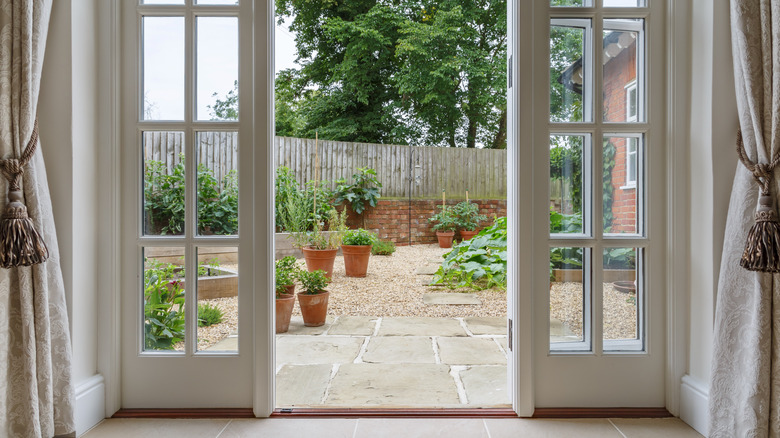The Unexpected Outdoor Decor That Adds A Ton Of Detail & Texture To Your Indoor Spaces
When you think of adding trendy natural materials to your home, reclaimed and natural wood furniture or bamboo decor probably come to mind. You might also consider adding terracotta pots to decorate your living room or a stone backsplash in your kitchen. But leave it to the brilliant minds of classic interior designers like Elsie de Wolfe — and the hopeful beauty of summer — to pave the way for innovative design inspiration. Wolfe, who is considered the first interior designer, has been cited as being the person who popularized the employment of an unlikely outdoor texture lattice, being used indoors — lattice. And it's definietly taking modern design to a whole new level.
A lattice is a decorative framework design of a crossing pattern, typically made of metal or wood. You may be familiar with its pattern adorned on outdoor patio doors, fences, and gazebos to help support plant growth in gardens. Beyond their function, though, the gorgeous patterns became a trademark in architectural design, adding elegance to Roman buildings and other historical sites like the Taj Mahal. Today, you may find this charming texture adorned on dining room walls and large entryways.
How to use lattice in your interior home decor
The intricate pattern of lattice can make any space look bigger, as it can lead your gaze up, so consider which spaces could use the depth when adding the design to a room. For example, you may consider adding lattice to dead spaces in your home, such as underneath stairs, or bare walls in rooms that would benefit from the beautiful texture, like in living rooms or dining areas. You may also use lattice in entryways to impress guests as a subtle buffer between the indoors and outdoors.
When incorporating lattice in your home, you may also want to consider the existing design of your home. Depending on the type of pattern of your lattice, the timeless texture can complement various designs, from maximalist to eclectic to even a rustic or contemporary design. To further customize your design, you may want to paint your lattice. For example, a white or a neutral hue can work for an airy, minimalistic feel, while adding a pop of color, such as olive or yellow, can support a more maximalist tone. You don't necessarily have to go out and splurge on lattice textures to get this effect — there are plenty of ways to repurpose extra lattice. Either way, adding a lattice texture to your home can be a gorgeous and unique way to add charm and depth to your spaces, whether by adding to entryways or accent walls in your living spaces for visual appeal.
